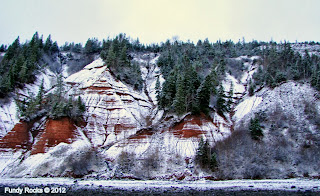Today I am making agate plates, so I don't have much time to implement a posting. So thanks to Jamey and Lois, I am borrowing a couple of photos from their Facebook page for The Agate Cross Bed and Breakfast.
First is a picture of the agate window I recently made for one of their kitchen windows.
The other day mutual friend, Renee, found a huge snapping turtle in her driveway. She called Jamey, who went right over to rescue the poor fellow. Jamey let the turtle go east of town.
Description: The
snapping turtle is the largest freshwater turtle in Michigan, as well as many other states. It has a
very large head, a long neck, and a long tail, which is saw-toothed along the
top. The top of the shell is large and varies in color from black to
light brown. The bottom of the shell is small and unhinged. Average
length varies from 8 to 14 inches (20.3-36 cm) in , while weight
ranges from 10 to slightly more than 50 lbs. (4.5-22.5 kg). The largest common snapping turtle ever caught was around 75 pounds.
Feeding/Diet: Snapping turtles are omnivorous.
Their diet is varied and includes aquatic invertebrates, fish, reptiles, birds
(such as ducklings), mammals, carrion, and aquatic vegetation. They frequently
feed on dead or dying animals.
Activity/Behavior: This is one of the most
aquatic freshwater turtles. However, individuals of all sizes
can be found on land, especially nesting females. In the water snapping turtles
are powerful swimmers, but will frequently walk along the bottom. These turtles
rarely bask on logs, but will sometimes “bask” while floating at the water’s
surface.
Habitat/Range: Snapping turtles can be found in
nearly all permanent water bodies, but they prefer water bodies with soft
bottoms and abundant aquatic vegetation. Small individuals can be found in
streams.
Reproduction: Snapping turtles lay between 11
and 83 round eggs during the late spring and summer. Females may walk a
considerable distance from water to lay their eggs, and are frequently hit by
motor vehicles while crossing roads.
Miscellaneous: Snapping turtles get their
name from their defensive behavior. Many individuals, especially those taken out
of the water, will bite readily with their strong jaws if approached. Snapping
turtles are economically important as many are harvested each year for their
meat. Studies have shown that commercial harvest of snapping turtles in not
sustainable and will result in extirpation of populations.
CITE: http://www.herpsofnc.org/herps_of_nc/turtles/Cheser/cheser.html


















































